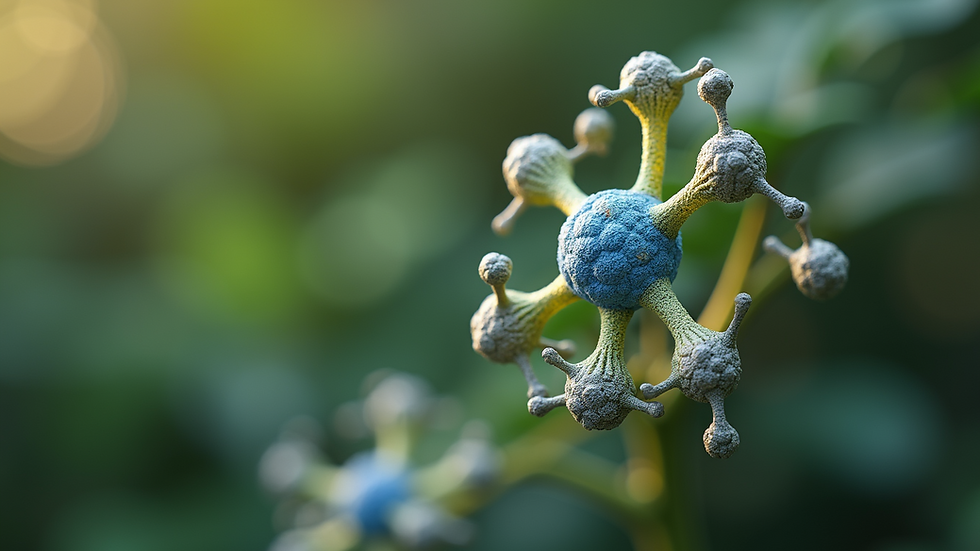Understanding the Unique Characteristics of Cannabis Strains
- abagail76
- Sep 29
- 3 min read
Cannabis strains are diverse and complex, each offering unique effects, flavors, and benefits. Whether you are a seasoned user or new to cannabis, understanding these differences can help you make informed choices. This article explores the key characteristics of cannabis strains, how they affect the user, and practical tips for selecting the right strain for your needs.
Exploring Different Cannabis Strains
Cannabis strains are generally categorized into three main types: Indica, Sativa, and Hybrid. Each type has distinct physical traits, chemical profiles, and effects on the body and mind.
Indica strains tend to have broad leaves and a shorter, bushier appearance. They are often associated with relaxing and sedative effects.
Sativa strains usually have narrow leaves and grow taller. They are known for their uplifting and energizing effects.
Hybrid strains are crossbreeds of Indica and Sativa, combining traits from both parents to create balanced or specialized effects.
The chemical makeup of these strains, particularly the levels of cannabinoids like THC and CBD, and terpenes, plays a significant role in their effects. For example, a strain high in THC may produce stronger psychoactive effects, while one rich in CBD might offer more therapeutic benefits without intense intoxication.
Understanding the unique characteristics of cannabis strains can help users tailor their experience, whether for relaxation, creativity, pain relief, or other purposes.

How Cannabis Strains Influence Effects and Experience
The effects of cannabis strains vary widely depending on their chemical composition and individual user factors. Here are some key points to consider:
THC Content: Tetrahydrocannabinol (THC) is the primary psychoactive compound. Higher THC levels generally mean stronger euphoric or "high" sensations.
CBD Content: Cannabidiol (CBD) is non-psychoactive and often used for its calming and anti-inflammatory properties.
Terpenes: These aromatic compounds influence flavor and may also affect the strain's impact on mood and sensation.
For example, a strain with high myrcene terpene content might promote relaxation and sleepiness, while one rich in limonene could boost mood and energy.
When choosing a strain, consider your desired outcome. If you want to unwind after a long day, an Indica-dominant strain with calming terpenes might be ideal. For daytime use or creative tasks, a Sativa-dominant strain with uplifting effects could be better.

Do you get higher from indica or sativa?
A common question among cannabis users is whether Indica or Sativa strains produce a stronger "high." The answer is not straightforward because the intensity and type of high depend on multiple factors beyond just the strain category.
Indica strains are often associated with a body-centered, relaxing high that can help with pain relief and sleep. Sativa strains tend to produce a more cerebral, energetic high that may enhance creativity and focus.
However, the actual experience depends on the specific chemical profile of the strain, including THC and terpene levels. Additionally, individual tolerance, consumption method, and dosage play crucial roles.
For a clearer understanding of the difference between indica and sativa, it is helpful to look beyond simple labels and consider the full cannabinoid and terpene profile of the strain.
Practical Tips for Choosing the Right Cannabis Strain
Selecting the right cannabis strain can enhance your experience and meet your specific needs. Here are some actionable recommendations:
Identify Your Goals
Relaxation or sleep: Look for Indica-dominant strains with calming terpenes like myrcene or linalool.
Energy and creativity: Choose Sativa-dominant strains with uplifting terpenes such as limonene or pinene.
Pain relief or anxiety: Consider strains with balanced THC and CBD levels.
Start Low and Go Slow
If you are new or trying a new strain, start with a low dose to gauge your reaction.
Consult Budtenders or Experts
They can provide insights based on your preferences and local availability.
Consider Consumption Method
Smoking, vaping, edibles, and tinctures all affect onset time and intensity differently.
Keep a Journal
Track strains, doses, and effects to find what works best for you.

The Future of Cannabis Strain Development
Cannabis breeding continues to evolve, with growers creating new strains to meet diverse consumer demands. Advances in genetics and cultivation techniques allow for more precise control over cannabinoid and terpene profiles.
This innovation leads to strains tailored for specific medical conditions, recreational preferences, and even flavor profiles. As legalization expands, expect to see more variety and higher quality products.
Understanding the unique characteristics of cannabis strains will remain essential for consumers to navigate this growing market effectively.
By learning about the different types of cannabis strains and their effects, you can make smarter choices that enhance your experience. Whether you seek relaxation, creativity, or therapeutic benefits, the right strain is out there waiting for you.





Comments